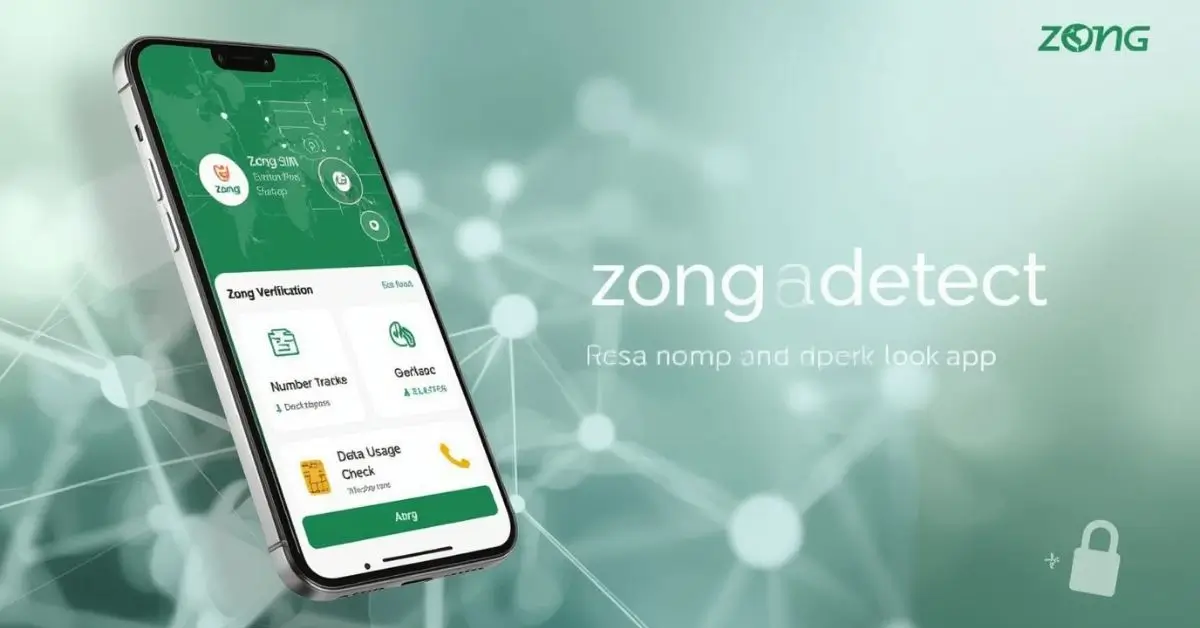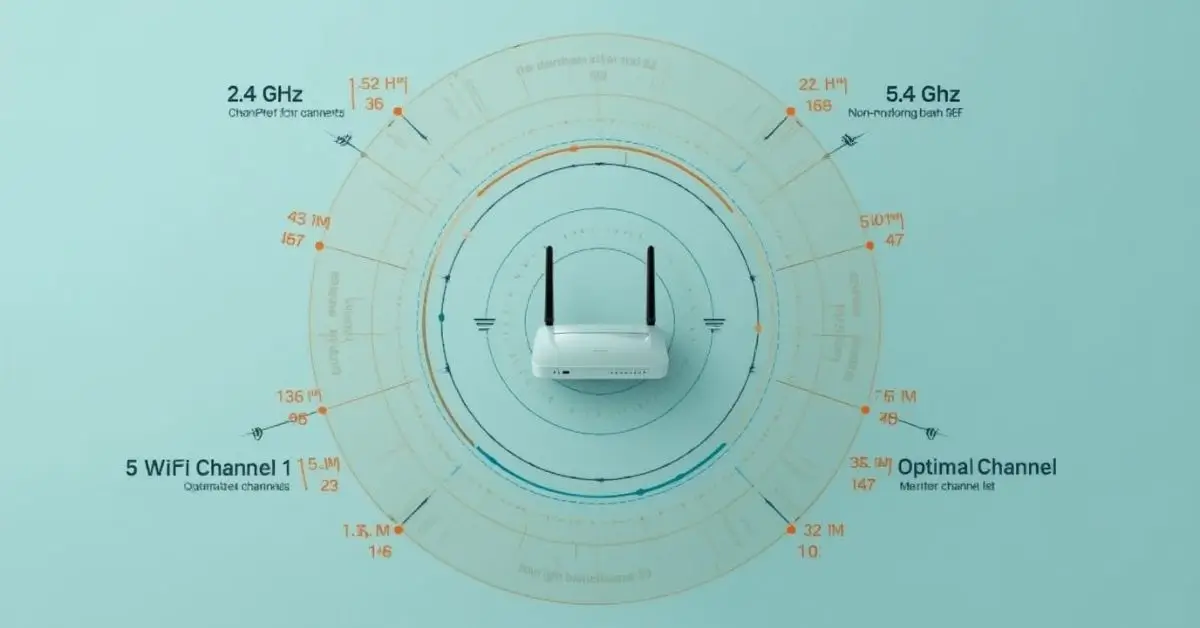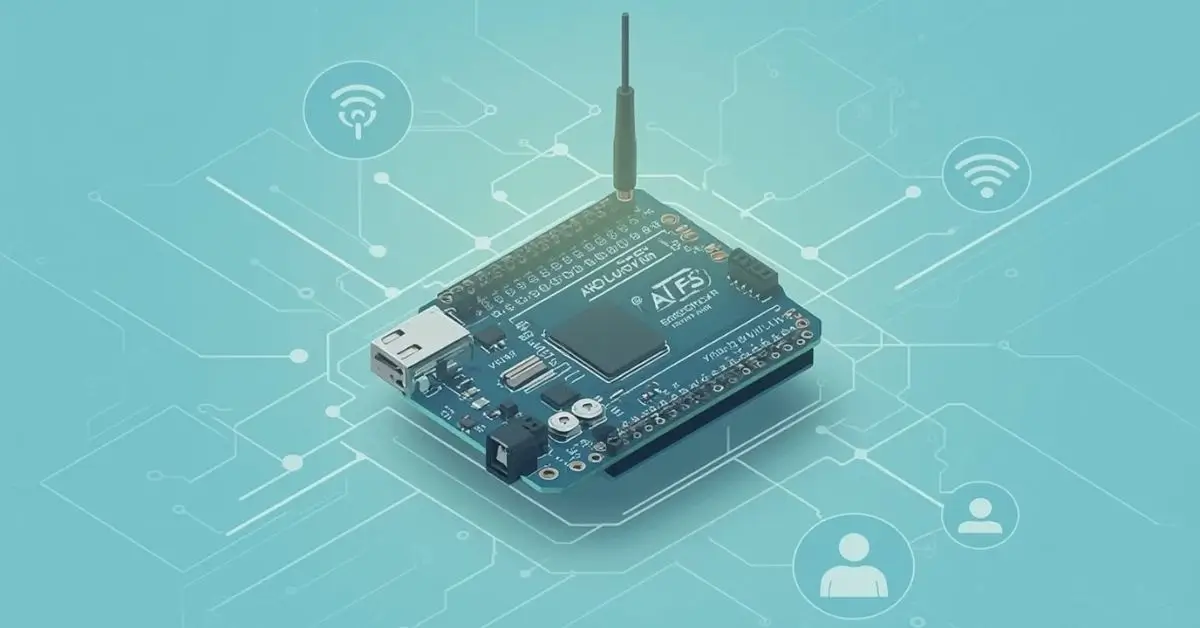TECH
Introducing 418DSG7: Revolutionizing Software Innovation

Introducing 418DSG7 is not just another software update; it’s an entirely new software framework that utilizes advanced algorithms and machine learning to improve efficiency across different systems. At its core, the software uses a combination of artificial intelligence (AI) and data processing techniques that allow for highly dynamic and adaptable operations. It has been designed with scalability in mind, allowing businesses of all sizes to implement the software seamlessly into their workflows.
What sets 418DSG7 apart is its ability to integrate with existing platforms. It supports a range of operating systems, including Windows, macOS, and Linux, providing users with flexible deployment options. Additionally, its API integrations offer compatibility with popular tools like CRM systems, data analytics platforms, and cloud-based applications, ensuring that companies can maximize their return on investment by integrating the software into their existing ecosystem.

Key Features of 418DSG7
Machine Learning Integration for Enhanced Performance
One of the standout features of 418DSG7 is its ability to leverage machine learning for predictive analytics and decision-making. The software is equipped with algorithms that can learn from historical data, recognize patterns, and predict future trends. This makes it an ideal tool for businesses in e-commerce, finance, and healthcare, where data-driven decision-making is paramount. For instance, a financial institution using 418DSG7 can predict market trends and optimize investment strategies, leading to better results and reduced risks.
Real-Time Data Processing
Another impressive feature is its real-time data processing capability. The software can handle large volumes of data in real time, ensuring that critical insights are always available when needed. This is particularly useful for sectors such as telecommunications and logistics, where speed and accuracy are crucial for effective operations. Whether it’s processing transactional data or handling IoT devices, 418DSG7 ensures seamless integration, reducing delays and improving the overall workflow.
Customization and User Control
418DSG7 provides businesses with a customizable interface that can be tailored to suit specific needs. From user roles to dashboards and reporting tools, this level of flexibility allows users to shape the software environment according to their specific requirements. With this level of control, businesses can ensure that they’re using the software in the most efficient way possible.
Cross-Platform Compatibility
Unlike many software solutions that work only on specific systems, 418DSG7 is designed to be cross-platform compatible. This ensures that no matter what operating system a company or individual uses, they can access the full range of features. Whether working from a desktop computer, a mobile device, or even a cloud-based platform, users can continue their work without interruption.
The Benefits of 418DSG7 for Various Industries
Finance: Improving Risk Management and Decision-Making
For businesses in the financial services industry, 418DSG7 offers a sophisticated risk management tool that uses machine learning algorithms to assess market conditions and mitigate risks. It can help financial analysts make more informed investment decisions by processing historical and real-time data, thus optimizing portfolio management.
Healthcare: Streamlining Operations and Enhancing Patient Care
In healthcare, 418DSG7 is being adopted to streamline administrative processes and improve patient care. Its real-time data processing helps healthcare professionals track patient records efficiently, while its predictive analytics can aid in patient diagnosis and treatment planning. Additionally, healthcare providers are leveraging 418DSG7 to ensure regulatory compliance, streamline medical billing, and enhance operational efficiency.
E-Commerce: Personalizing the Customer Experience
In the competitive world of e-commerce, personalization is key to building lasting customer relationships. 418DSG7 uses machine learning to analyze consumer behavior and suggest personalized recommendations, improving the customer journey and driving conversions. This level of personalization is invaluable for e-commerce businesses looking to retain customers and boost sales.
418DSG7 and the Future of Software Development
418DSG7 is pushing the boundaries of what’s possible in the world of software development. With the rise of AI, cloud computing, and data analytics, this software solution is positioned to be at the forefront of technological advancement. As businesses increasingly demand more efficient and scalable solutions, 418DSG7’s ability to adapt to various industries and use cases ensures that it will remain relevant for years to come.
Furthermore, with continuous updates and the ability to scale with businesses, 418DSG7 offers long-term value, making it an investment worth considering for organizations looking to stay competitive. As the software continues to evolve, its ability to integrate with newer technologies will only enhance its utility, making it a cornerstone of the modern enterprise landscape.
How 418DSG7 Enhances User Experience
Intuitive Interface
Despite its advanced capabilities, 418DSG7’s user-friendly interface ensures that even non-technical users can leverage its power. The software provides a simple, intuitive navigation system that reduces the learning curve and enhances productivity. Whether you are managing complex data sets or performing high-level analysis, 418DSG7’s interface ensures that your workflow is efficient and hassle-free.

Automated Workflows
Another advantage of using 418DSG7 is its ability to automate repetitive tasks. By integrating with existing systems, the software can automate everything from data entry to report generation. This frees up valuable time for employees to focus on higher-level, strategic activities, driving business growth.
Frequently Asked Questions (FAQs)
What makes 418DSG7 different from other software solutions?
418DSG7 is unique due to its powerful combination of machine learning, real-time data processing, and cross-platform compatibility. It offers an intuitive interface, seamless integrations, and customizable features that cater to businesses across various industries.
Can 418DSG7 be integrated with my existing systems?
Yes, 418DSG7 is designed to integrate with a wide range of systems, including CRM tools, data analytics platforms, and cloud-based applications. Its API integration feature ensures that it can easily work alongside your existing software stack.
Which industries can benefit from 418DSG7?
418DSG7 is versatile and can be used across many industries, including finance, healthcare, e-commerce, telecommunications, and more. Its customizable features make it adaptable to a wide range of business needs.
Is 418DSG7 scalable for small businesses?
Yes, 418DSG7 is designed to scale with your business. Whether you’re a small startup or a large enterprise, this software can be customized to meet your needs as you grow.
Conclusion
The introduction of 418DSG7 marks a significant step forward in the evolution of software development. With its focus on machine learning, real-time data processing, and scalability, this software solution offers unique advantages that can help businesses across various industries enhance their operations and improve efficiency. Whether you’re in finance, healthcare, e-commerce, or any other sector, 418DSG7’s ability to integrate with existing systems and adapt to specific needs makes it a powerful tool for businesses aiming to stay ahead of the competition.
TECH
What Is zongadetect? A Simple Guide for New Users

At its core, zongadetect is a telecom detection tool designed for Zong users in Pakistan to manage and monitor mobile-related data securely. It acts as a Zong number tracker, SIM verification tool, and identity-checking platform all in one.
The rise of digital communication has brought convenience—but also risks. From fake numbers to SIM cloning and data leaks, many users are unaware of who has access to their personal information. Zongadetect helps fill that gap by letting users check the identity and registration details linked to a mobile number.
In 2025, such services have become indispensable for both individuals and businesses aiming to maintain trust and transparency.
The Evolution of Mobile Safety: Why Zongadetect Is Needed
The mobile ecosystem has changed dramatically in the last decade. With the surge in digital platforms, cyber threats have also evolved. Spam calls, data breaches, and fake identities now pose serious risks.
For instance, many Zong users have reported receiving fraudulent messages disguised as official communication. Some users unknowingly share personal data, leading to privacy loss or even financial fraud.
Tools like zongadetect emerged to solve this problem. They help users:
- Detect unrecognized numbers
- Verify SIM registration details
- Check data usage in real-time
- Analyze suspicious activity
In short, zongadetect bridges the gap between technology and user awareness, allowing people to take control of their mobile identities.
How Zongadetect Works: A Step-by-Step Overview
To make the process simple, here’s how zongadetect typically operates:
- User Input: You enter a Zong number or SIM detail into the Zong detect tool.
- Database Check: The system cross-references Zong’s registered user database.
- Identity Display: Basic details—like name, registration city, and SIM status—are displayed.
- Additional Checks: For premium users, you can access Zong data usage checks or analyze multiple SIMs registered under the same CNIC.
This efficient workflow empowers users to detect, verify, and secure their mobile data effortlessly.
Zong Detect Tool: Core Features and Benefits
The Zong detect tool isn’t just another telecom utility. It’s an integrated solution combining safety, transparency, and ease of access. Below are its most powerful features:
Zong Number Tracker
Helps identify unknown or suspicious numbers instantly. Whether it’s a prank caller or a potential scam, the Zong number tracker ensures you’re never in the dark.
Zong SIM Verification
This feature lets users verify the authenticity of their SIM cards. It helps ensure your number is registered under your CNIC and hasn’t been misused.
Zong Data Usage Check
Track your real-time data consumption through zongadetect to avoid unnecessary charges or bandwidth abuse.
Zong App Detection
Monitors installed Zong applications and their permissions, giving users full transparency into what data is shared or accessed.
SIM Owner Details Check
This function is essential for people wanting to confirm ownership of a SIM card. It displays details like registration name, CNIC linkage, and activation date.
Telecom Detection Tool for Network Monitoring
Provides insights into signal quality, location accuracy, and device health, which can be useful for frequent travelers and business users.
Advantages of Using Zongadetect
The benefits of zongadetect extend far beyond tracking a number. Let’s explore its broader impact:
- Enhanced Privacy Protection: Keeps your personal data safe from unauthorized users.
- Fraud Prevention: Detects fake or cloned numbers before they cause harm.
- Time Efficiency: Instantly retrieves SIM details without visiting a service center.
- Transparency: Ensures every Zong SIM remains properly registered.
- User Awareness: Educates users about telecom safety and responsible SIM usage.
As one user put it in an online discussion:
“I used zongadetect when I received suspicious messages. Within seconds, I knew who owned the number. It saved me from a potential scam.”
Such testimonials show how tools like this have become invaluable in the digital age.
Zongadetect and Cybersecurity in 2025
The year 2025 has marked a turning point for digital identity management. Pakistan’s telecom sector has implemented stricter regulations to combat SIM misuse, fake registrations, and spam activity.
Zongadetect aligns perfectly with these national security standards. It helps telecom operators and users collaborate in maintaining data integrity.
Additionally, it complements tools such as mobile number lookup services and telecom detection tools by integrating data validation layers that verify user authenticity.
For cybersecurity professionals, zongadetect serves as a bridge between public utility and network integrity.
Zong Profile Analysis and Mobile Safety Detection
Zong Profile Analysis
The Zong profile analysis feature allows users to view detailed insights about their mobile profiles — including active packages, linked devices, and account security status.
It can also identify irregular login locations, which could indicate unauthorized use.
Mobile Safety Detection App
The mobile safety detection app works alongside zongadetect to alert users about potential threats, phishing links, or privacy vulnerabilities on their smartphones.
Together, these tools create a robust mobile protection ecosystem.
Risks and Ethical Considerations
While zongadetect offers valuable tools, responsible usage is crucial. Using any detection platform to invade privacy or gather unauthorized data can lead to legal consequences.
Always ensure:
- You’re verifying your own SIM or authorized numbers only.
- You respect privacy laws and telecom regulations.
- You use these tools for security, not surveillance.
Responsible digital practices ensure that tools like zongadetect maintain their credibility and integrity in the telecom space.
Zongadetect vs Other Detection Tools
| Feature | Zongadetect | Generic Number Tracker | Mobile Safety App |
|---|---|---|---|
| SIM Verification | Yes | No | Limited |
| Real-Time Data Usage | Yes | No | Partial |
| Telecom Integration | Yes | No | Yes |
| Owner Identity Check | Yes | Yes | No |
| Legal Compliance | Fully Regulated | Unknown | Moderate |
This comparison highlights Zongadetect’s edge in both functionality and compliance.
Spreading Awareness: The Role of Digital Literacy
One of the key aspects of E-E-A-T (Experience, Expertise, Authoritativeness, Trustworthiness) is promoting awareness. Zongadetect plays a significant role in educating users about digital responsibility, telecom ethics, and online safety.
Telecom companies and cybersecurity experts emphasize that awareness is the first line of defense. Tools like this are most effective when users understand their purpose and limitations.
Future of Zongadetect: What’s Next in 2025 and Beyond
As technology advances, Zongadetect is expected to integrate AI-powered number analysis, machine learning-driven fraud detection, and cloud-backed SIM verification.
These improvements will:
- Enhance real-time response accuracy
- Predict potential threats using data analytics
- Provide personalized safety recommendations
In the future, Zongadetect might evolve into a comprehensive telecom safety suite, merging voice, data, and identity protection under one platform.
FAQ’s
What is Zongadetect used for?
It’s used to verify Zong SIM ownership, track unknown numbers, check data usage, and protect mobile identities.
Is Zongadetect free to use?
Basic services are free, but advanced features like profile analysis or detailed number tracking may require a premium upgrade.
How accurate is Zongadetect?
The tool pulls data directly from Zong’s registered user database, ensuring over 95% accuracy for verified numbers.
Can I use Zongadetect to track someone else’s number?
No. It should only be used for legitimate verification or self-checking. Misuse can result in penalties under telecom regulations.
Conclusion
In 2025, where cyber threats and digital fraud are rising daily, having a reliable telecom detection tool is no longer optional—it’s necessary. Zongadetect empowers users to take charge of their data, verify identities, and maintain mobile safety.
TECH
Best WLAN Channel to Fix Slow or Laggy Wi-Fi

Slow internet? Lag while gaming? Or that mysterious “no connection” bubble popping up at the worst possible moment? Most people assume the issue lies with their provider—but in truth, one of the most overlooked factors behind unstable connections is your WLAN channel. Choosing the best WLAN channel in 2025 can make or break your Wi-Fi performance.
Understanding WLAN Channels
Every Wi-Fi network operates on a specific frequency band—2.4 GHz or 5 GHz (and now, occasionally, 6 GHz for Wi-Fi 6E). Within these bands, there are channels, which are essentially lanes on a highway. Each lane carries data, but when too many people crowd one lane, congestion occurs.
What Exactly Is a Best WLAN Channel?
A WLAN (Wireless Local Area Network) channel is a specific segment of the wireless spectrum that your router uses to communicate with devices. Routers broadcast signals over these channels, and when neighboring networks use the same or overlapping channels, Wi-Fi channel interference occurs.
This overlap causes slower speeds, dropped signals, and increased latency—especially in apartment buildings or densely populated areas.
The Best WLAN Channel for 2.4 GHz
The 2.4 GHz band has been around for decades and offers longer range, but it’s often overcrowded. In most countries, there are 13 channels available, yet only three—1, 6, and 11—are non-overlapping.
If you’re using a standard router or have several older smart devices, stick to one of these three.
Why Channels 1, 6, and 11 Are Still the Best
Each channel in the 2.4 GHz band overlaps with its neighbors. For instance, channel 2 overlaps with both 1 and 3, creating interference. By choosing 1, 6, or 11, you ensure your signal stays isolated and stable.
Tip: If you live in an apartment, use a Wi-Fi analyzer app to see which of these three is least congested, then switch to that one.
Real-World Example
A user once tweeted, “Switched my Wi-Fi from channel 6 to 1 after scanning the neighborhood—download speed jumped from 35 Mbps to 92 Mbps!” That’s the power of strategic channel selection.
The Best WLAN Channel for 5 GHz
The 5 GHz band is like an express highway—faster, with more lanes, but shorter range. It supports up to 25 non-overlapping channels, giving you more flexibility.
How to Pick the Right Channel on 5 GHz
Unlike 2.4 GHz, there’s no universal “best channel” here. Instead, look for UNII-1 and UNII-3 channels (36-48 and 149-165). These are generally less crowded and ideal for Wi-Fi optimization for gaming or streaming.
Dynamic Frequency Selection (DFS)
Some routers support DFS channels (between 52–144). These are typically less congested because not all routers can use them, but beware—DFS channels share spectrum with radar systems, and your router might temporarily switch away if interference is detected.
For stable performance and minimal latency, channels 36, 40, 44, or 48 are solid picks for home use.
Wi-Fi Channel Interference Explained
Wi-Fi channel interference happens when multiple nearby networks use the same or overlapping channels. It’s similar to several people shouting over each other in the same room—your device struggles to hear its own router clearly.
Types of Interference
- Co-channel interference: Multiple routers using the same channel politely take turns, but performance slows.
- Adjacent-channel interference: Overlapping channels transmit at the same time, causing packet collisions and data loss.
How to Detect Interference
Use Wi-Fi analyzer tools like NetSpot, WiFi Analyzer (Android), or inSSIDer (Windows). These apps visualize surrounding networks and their channels, showing which frequencies are congested.
Router Channel Optimization: Manual vs. Automatic
Most modern routers offer automatic channel selection, which analyzes nearby networks and picks the least congested channel. However, this feature isn’t always reliable—it only checks once during startup.
Automatic vs. Manual Channel Selection
| Mode | Pros | Cons |
|---|---|---|
| Automatic | Easy setup, adjusts on reboot | May not adapt to changing environments |
| Manual | Greater control, stable once optimized | Requires periodic checks |
For stable results, it’s often best to manually assign your channel using real-time scan results.
Wireless Channel Overlap and Why It Matters
On the 2.4 GHz band, overlapping channels are the biggest cause of poor performance. Each channel is 20 MHz wide, and since the total spectrum is 100 MHz, only three non-overlapping channels fit neatly.
Channel Width 20 MHz vs. 40 MHz
Wider channels (40 MHz) provide faster speeds—but they also double the risk of interference. For crowded environments, stick with 20 MHz to ensure stability.
| Setting | Recommended For | Performance | Interference Risk |
|---|---|---|---|
| 20 MHz | Apartments, offices | Moderate | Low |
| 40 MHz | Suburbs, large homes | High | Moderate |
| 80 MHz / 160 MHz (5 GHz) | High-speed gaming, streaming | Very High | Higher |
WLAN Signal Strength Tips
If your Wi-Fi signal drops in certain rooms, don’t rush to buy a new router—first, optimize what you have.
- Position your router centrally. Avoid corners or behind walls.
- Elevate it. Place it on a shelf rather than the floor.
- Keep it clear of metal objects and microwaves.
- Update firmware. Router updates often include performance improvements.
- Use mesh or extenders. Large homes benefit from multi-node systems.
How to Improve Wi-Fi Performance in 2025
Improving Wi-Fi isn’t only about buying faster equipment—it’s about reducing Wi-Fi congestion and optimizing network settings.
Steps for Better Network Optimization
- Scan and switch to the least congested channel.
- Separate 2.4 GHz and 5 GHz networks under different SSIDs for better control.
- Turn off unused legacy modes (like 802.11b) that slow everything down.
- Use WPA3 encryption—not only for security but improved efficiency.
- Reboot your router weekly to clear background cache.
This forms the backbone of any network optimization guide and keeps your Wi-Fi healthy over time.
Best Router Settings for Speed
Your channel choice matters, but so do other settings. In 2025, routers offer fine-tuning options that directly affect speed and stability.
Recommended Router Settings
| Setting | Ideal Option | Why It Matters |
|---|---|---|
| Wireless Mode | Auto (or Wi-Fi 6/6E) | Uses best available standard |
| Channel Width | 20 MHz (2.4 GHz) / 80 MHz (5 GHz) | Balances speed and reliability |
| Transmit Power | High | Extends range |
| QoS (Quality of Service) | Enabled | Prioritizes streaming/gaming |
| Security | WPA3 | Best encryption and performance |
| Beamforming | Enabled | Strengthens directional signal |
Proper router channel optimization paired with these tweaks delivers measurable results—often doubling throughput without spending a dime.
Wi-Fi Optimization for Gaming
Gamers are especially sensitive to latency spikes. The difference between 10 ms and 50 ms can mean the difference between winning and losing.
How to Tune Your Wi-Fi for Gaming
- Use the 5 GHz band for lower latency.
- Choose a non-DFS channel (like 36 or 44) for stability.
- Enable QoS and prioritize your gaming device.
- Minimize background downloads or streaming.
If you’re serious about online gaming, consider Ethernet for competitive play but keep Wi-Fi optimized for convenience and mobile gaming.
The Role of Wi-Fi Analyzer Tools
Wi-Fi analyzer tools are your best friend in finding the best WLAN channel. They display nearby networks, signal strengths, and channel usage in real time.
Top Tools in 2025
| Tool | Platform | Notable Feature |
|---|---|---|
| NetSpot | Windows, macOS | Heatmap visualization |
| WiFi Analyzer | Android | Simple interface for home users |
| inSSIDer | Windows | Detailed signal diagnostics |
| Acrylic Wi-Fi | Windows | Advanced analytics for professionals |
| Fing | iOS, Android | Quick device and interference scan |
With these, you can easily identify which channel offers the best balance of performance and stability.
Advanced Network Optimization Guide for 2025
Beyond channel selection, next-gen routers now support AI-based optimization and mesh coordination. These systems analyze interference patterns and automatically shift devices to optimal nodes or bands.
Future Trends
- Wi-Fi 6E and 7 expand into the 6 GHz band, nearly eliminating congestion.
- Smart home routers integrate with AI assistants for adaptive management.
- Environmental sensing detects neighboring networks and adapts instantly.
Even so, the fundamentals—channel selection, signal positioning, and reducing overlap—remain crucial.
Pros and Cons of Manual Channel Optimization
| Pros | Cons |
|---|---|
| Full control over your network | Requires technical understanding |
| Potential for faster speeds | Manual maintenance |
| Reduces interference effectively | Slight learning curve |
| Ideal for multi-device environments | Trial and error needed |
Manual tuning appeals to power users and small businesses seeking maximum control, while casual users may prefer routers with smart auto-optimization.
Common Mistakes to Avoid
- Using wide channels in crowded 2.4 GHz areas.
- Ignoring firmware updates.
- Placing the router behind metal or concrete walls.
- Assuming “Auto” always picks the best channel.
- Mixing old and new devices on the same SSID.
Small corrections in these areas often yield noticeable improvements.
FAQs
What is the best WLAN channel for 2.4 GHz?
Channels 1, 6, and 11 are generally best because they don’t overlap. Use a Wi-Fi analyzer to see which is least crowded in your area.
What’s the best WLAN channel for 5 GHz in 2025?
Try 36, 40, 44, or 48 for stability, or explore DFS channels (52–144) for less congestion if your router supports them.
How can I reduce Wi-Fi congestion at home?
Separate 2.4 GHz and 5 GHz networks, turn off unused devices, and manually pick channels with low interference.
Does changing my WLAN channel really improve performance?
Yes—if your area is crowded, changing the channel can significantly improve Wi-Fi performance, reducing latency and packet loss.
Final Thoughts
Choosing the best WLAN channel is one of the simplest yet most powerful tweaks you can make for faster, smoother internet. In 2025, as connected devices multiply and networks overlap, mastering channel selection is essential for anyone who values speed, stability, and security.
TECH
Top Reasons to Use Antennino in Your Next Project

At its core, Antennino is a low-power, wireless carte microcontrôleur sans fil designed for IoT applications. Unlike standard Arduino boards that require external transceivers or shields, Antennino integrates an RF module and antenna directly on the board, streamlining communication and saving space.
It’s built for efficiency, connecting devices across distances using connectivité radio 433 MHz / 868 MHz—frequencies ideal for low-power, long-range communication in sensor networks and automation systems.
In 2025, when IoT is powering everything from smart homes to industrial monitoring, Antennino has positioned itself as a board IoT compact that delivers reliable wireless connectivity with minimal setup.
“Once I switched to Antennino for my greenhouse sensor project, I never looked back. It’s like Arduino and RF finally became one perfect team,” says one enthusiastic maker on a popular electronics forum.
Core Features of Antennino
Antennino’s design philosophy is centered on accessibility and innovation. Here’s what sets it apart:
Integrated RF and Antenna Module
The defining feature of Antennino is its carte Arduino RF intégrée. The onboard module RFM69 supports multiple frequencies and protocols, ensuring low-latency and stable data transfer.
This built-in antenne intégrée pour IoT eliminates the need for external transceiver shields, reducing wiring complexity and overall cost.
Low Power Consumption
Antennino excels as a module radio basse consommation, enabling battery-powered devices to run for months—or even years—on minimal energy. It’s ideal for IoT nodes that need to remain operational without constant maintenance.
Seamless Compatibility with Arduino Ecosystem
Fully compatible with the Arduino IDE, Antennino maintains ease of programming. Developers can upload sketches, use familiar libraries, and control connected devices effortlessly.
Compact, Durable, and Scalable
This carte embarquée avec module RF is optimized for compact setups, making it perfect for wearable tech, home automation, or environmental sensors.
Dual Frequency Options for Global Use
Supporting connectivité radio 433 MHz / 868 MHz, Antennino ensures compatibility across regions, whether you’re in Europe, Asia, or the Americas.
Why Choose Antennino Over Traditional Arduino Boards
When compared to a standard Arduino paired with an external RF module, Antennino provides clear advantages:
| Feature | Standard Arduino + RF Module | Antennino |
|---|---|---|
| RF Integration | Requires separate module | Built-in module RFM69 |
| Power Efficiency | Moderate | Highly optimized for low power |
| Size | Bulky setup | Board IoT compact |
| Setup Time | Needs manual wiring | Ready-to-use |
| Wireless Range | Dependent on module quality | Optimized antenna design |
| Cost Efficiency | Higher due to add-ons | More affordable long-term |
| Ideal For | Prototyping | Scalable, finished solutions |
By merging the carte RF + MCU into one unified design, Antennino helps developers focus on building functional IoT systems instead of managing hardware integration.
How Antennino Powers IoT Applications in 2025
The IoT landscape of 2025 demands devices that are intelligent, connected, and sustainable. Antennino fulfills these needs with ease. Let’s look at some real-world examples where Antennino thrives.
Smart Home Automation
Imagine a smart home system where temperature sensors, motion detectors, and lights communicate wirelessly through a carte microcontrôleur sans fil network. Antennino allows seamless synchronization of these devices with minimal coding and setup.
Agricultural Monitoring
In precision farming, Antennino nodes can be deployed across large fields to collect soil moisture and temperature data. Using communication sans fil embarquée, these devices send real-time updates to a central dashboard—without requiring expensive infrastructure.
Industrial IoT (IIoT)
Manufacturing facilities are increasingly adopting embarqué IoT low power solutions. Antennino provides reliable wireless monitoring for machinery, ensuring uptime and predictive maintenance.
Educational Projects
For students learning about embedded systems, Antennino simplifies complex wireless concepts. It’s the ideal développement IoT prototypage tool for hands-on experience.
Understanding the Technology Behind Antennino
The Antennino board combines microcontroller and RF module functionality using the RFM69 transceiver—a popular choice for sub-GHz communication.
How It Works
- The RFM69 module manages radio communication at 433 MHz or 868 MHz.
- The microcontroller processes sensor data or user inputs.
- The integrated antenna transmits data wirelessly to other nodes or a base station.
- The board’s low-power sleep mode minimizes energy usage when idle.
This architecture transforms Antennino into a self-sufficient “Arduino + radio” board—a perfect blend of performance and simplicity.
Advantages of Using Antennino
- Energy Efficiency: Designed for low energy draw, crucial for battery-dependent IoT systems.
- Compact Design: Space-saving and neat wiring.
- Versatility: Supports sensors, actuators, and multiple network topologies.
- Reliability: Fewer connection points mean fewer hardware failures.
- Scalability: Easy to expand into multi-node networks.
These benefits make it the go-to module sensoriel sans fil for developers seeking stability and simplicity.
How to Get Started with Antennino
If you’re familiar with Arduino, you’ll feel at home using Antennino.
- Download Arduino IDE: Ensure you have the latest version.
- Install Board Package: Add Antennino’s board manager URL from its documentation.
- Connect via USB: The board is recognized just like any other Arduino.
- Upload Example Code: Try the “Blink” or “Wireless Ping” demos.
- Build Your Network: Add multiple Antennino nodes for distributed communication.
With minimal effort, your IoT ecosystem will be up and running.
Best Use Cases for Antennino in 2025
- Smart Cities: Build low-cost environmental sensors and traffic monitors.
- Wearable Devices: Compact design supports small-scale innovations.
- Home Security: Wireless alarms, cameras, and access systems.
- Healthcare Monitoring: Real-time data transmission for remote patients.
- Educational Labs: Ideal for courses in embedded programming and IoT.
Every one of these scenarios benefits from Antennino’s carte Arduino RF intégrée technology and user-friendly interface.
Expert Opinion: The Future of Antennino in IoT
Industry analysts predict that Antennino will remain at the forefront of IoT innovation due to its combination of affordability, efficiency, and open-source support.
In an era where every device demands connectivity, a board that unites the carte RF + MCU design with module radio basse consommation operation sets a new industry standard.
Antennino doesn’t just simplify hardware—it empowers creators to imagine smarter, sustainable solutions.
FAQ’s
What is Antennino used for?
Antennino is used for creating wireless IoT projects, sensor networks, and automation systems. Its antenne intégrée pour IoT allows long-range communication without external modules.
How is Antennino different from Arduino Uno?
Unlike the Uno, Antennino includes an RF module and antenna, reducing the need for add-ons and offering superior power efficiency.
Can Antennino work with existing Arduino libraries?
Yes. Being Arduino IDE compatible, you can program Antennino with standard Arduino libraries and syntax.
Is Antennino suitable for commercial use?
Absolutely. Its embarqué IoT low power design supports both educational prototypes and scalable industrial solutions.
Final Thoughts
The evolution of IoT hardware continues to favor smarter, integrated systems—and Antennino embodies that trend perfectly. Its combination of carte microcontrôleur sans fil, module RFM69, and carte Arduino RF intégrée design makes it one of the most efficient and accessible tools for 2025.

 SCIENCE4 months ago
SCIENCE4 months agoThe Baby Alien Fan Bus Chronicles

 BUSINESS4 months ago
BUSINESS4 months agoMastering the Art of Navigating Business Challenges and Risks

 WORLD4 months ago
WORLD4 months agoRainwalkers: The Secret Life of Worms in the Wet

 WORLD4 months ago
WORLD4 months agoRainborne Royals: The Rise of Winged Termites

 WORLD4 months ago
WORLD4 months agoFox News Returns to Dish: Broadcast Battle Resolved

 EDUCATION4 months ago
EDUCATION4 months agoFresh Bites: Foodstuffs Update

 BUSINESS4 months ago
BUSINESS4 months agoNewport News Shipbuilding Furloughs Hit Salaried Workers

 WORLD4 months ago
WORLD4 months agoDesert Drizzle: Cracking the Yuma Rain Code
















